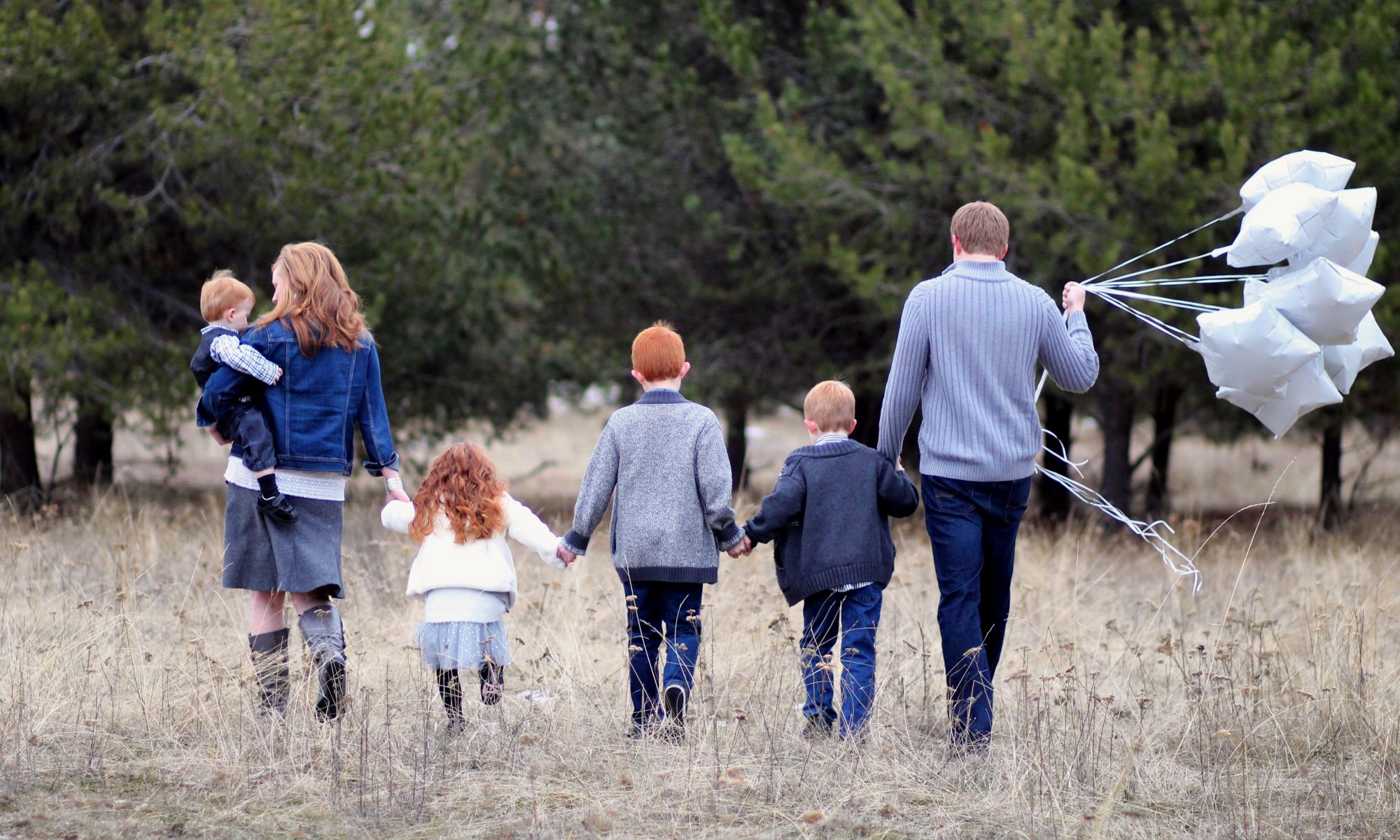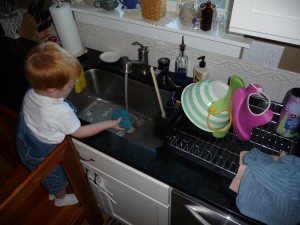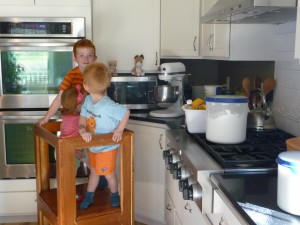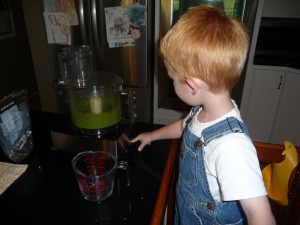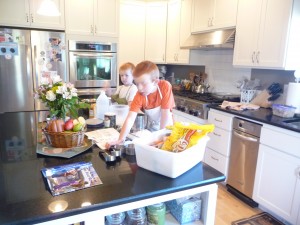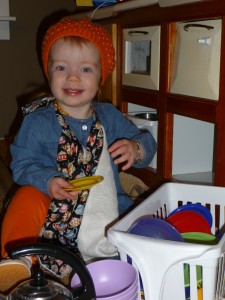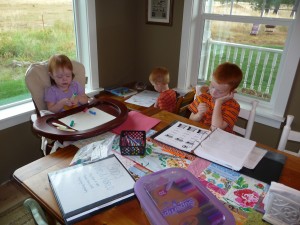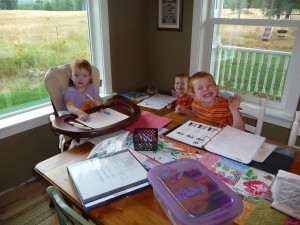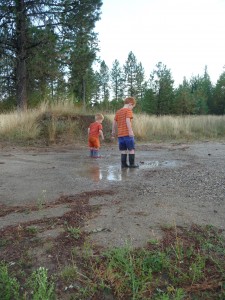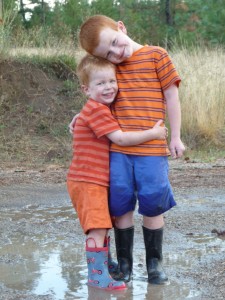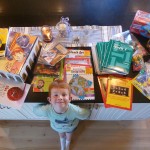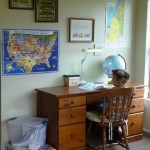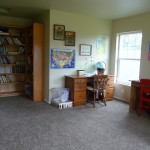This morning I had a “first experience” ~ I was interviewed on camera for a spot in a video curriculum. I’ve known this was coming for a number of weeks, but once it came down to it, I really felt like I just didn’t know what to expect. A week ago the interviewer sent me a list of nine potential questions for the interview and I was able to take the time to write out my answers, just for a dry run at things. I’m so much better in writing than in spoken conversation! It’s really too bad that the interview itself could not have been conducted through letters.  That being said, my interviewer and my husband both congratulated me on accomplishing a job well done at the end of things, and it sounds like I was able to answer questions that would be pertinent to the study being covered in this particular video course. I am looking forward to seeing the final edited version of the interview myself! I would love to know what I said.
That being said, my interviewer and my husband both congratulated me on accomplishing a job well done at the end of things, and it sounds like I was able to answer questions that would be pertinent to the study being covered in this particular video course. I am looking forward to seeing the final edited version of the interview myself! I would love to know what I said.  It should be interesting, too, because it was held in my own home, with my own writing desk behind me. Perfect ambiance, I guess you could say… and at least I had a chance to dust a little before the film crew arrived at my home. Always a good thing.
It should be interesting, too, because it was held in my own home, with my own writing desk behind me. Perfect ambiance, I guess you could say… and at least I had a chance to dust a little before the film crew arrived at my home. Always a good thing.

Some of the points I actually got to touch on during the interview were what I was expecting, and some weren’t (a lot more focusing on my courtship with Steven, and the role that written correspondence played in that ~ they even panned over to Steven a couple of times for his take on being the recipient of my letters). But here are a few things that I think I was able to say during the conversation, and I am hopeful that something here will be a blessing to the students in their studies.
I have been writing letters since before I remember. Officially, I know I was heavily penpalling by the time I was twelve years old, but I know I wrote letters in the form of pictures and simple notes to my grandmother and one of my cousins when I was very young, four or five years old. By the time I was twelve to fourteen years old, though, I had roughly fifty official penpals with whom I corresponded on a very regular basis, mostly in the United States but some internationally as well—I corresponded with girls as young as seven years old, and with women in their nineties, although the largest portion of my penpals were teenage girls like myself. These were all old-fashioned, handwritten letters at this point, and I think I wrote roughly three letters a day—some just a notecard perhaps, but most of them being rather lengthy as is simply my style—up to twenty sides of stationery pieces was not abnormal for me.
Letter writing is in my blood and also was simply part of the culture my parents instilled in me. My parents courted across the country before the age of cellphones and internet, so they wrote countless letters to one another, and my mom just loved writing letters and communicating with people through the written word, so I grew up watching her write letters, seeing her pour over stacks of mail, loved going through her stash of stationery and pretty return address labels. I grew up loving the artistic elements of letters: I collected stationery, postage stamps, stickers, different sizes or colors of pens.
I didn’t choose letter writing—it was put before me, ingrained in me, part of the culture around me, and it just organically expressed itself in myself as well.
My parents even considered my profuse letter writing part of our homeschooling routine. Sometimes they would read the letters to offer their suggestions on spelling, grammar, or even artistic and communicative flow.
I even loved the licking the envelope and tasting the different kinds of glue each one seemed to have—some were definitely better than others. Stamps used to have that same kind of tasty glory, but of course that’s been replaced by self-adhesive stamps these days. I think reading and journaling were two other ways that I developed some letter writing skills as well. It wasn’t something I was taught to do exactly, it was just instilled into me as part of our family culture.
I mean, really, there’s just nothing like opening your mailbox to find something other than catalogs, advertisements, and bills.
My parents specifically, cliché or not, have inspired me the most. As I’ve alluded to previously, their long-distance courtship through letters always inspired me. Someday I would love the pleasure of reading all those letters—for the most part, I’ve seen the envelopes and heard about the romance cultivated therein, but have never read the correspondence. I think the general feel of L.M. Montgomery, Louisa May Alcott, Jane Austen, and the short diary-based series of books called Dear America were somewhat forming in my style—but they were not generally themed on letters so much. And then both David and Paul in Scripture have also been inspiring to me in the way they poured out their souls in writing both for God’s glory and for the encouragement of others—perhaps not so much in forming my style for letter-writing but in the foundational aspects of why I write, why I love writing, and why I need to keep doing it—they continue to be authors who have deeply affected me personally.
I don’t utilize a lot of the modern forms of communication that are so popular these days—texting, facebook, twitter, etc. I don’t have them and I don’t want to. I do have email and a blog, and I do utilize those things to a large extent, but I use them in such a way that I am trying to pursue deep relationships, communicate on a deep level, and both maintain and pursue further connections with people. I don’t know a lot of the shorthand lingo that people use these days, which probably makes the chasm between my style and a typical modern style even larger and more obvious.
I came up with routines, stances, and rhythms that simply work for me. When my husband and I were courting long-distance we had the blessing of the internet to aid our communication, unlike my parents had had—so we largely emailed our letters to one another. I had spent many years typing (letters, a magazine for Christian young ladies, short works of fiction, etc) and had grown fast—very fast.
I have always felt that I am more myself in writing than in any other medium, and part of that IS simply due to speed. I can actually write faster and more accurately what is contained in my heart than I can speak, and I get less distracted while doing it.
In To The Letter by Simon Garfield, we’re told “the poet William Cowper was credited with a phrase equally attributed assigned to his contemporary Jane Austen—that letter-writing may be best described as the art of silent speech, the notion that the best letter to a friend was a ‘talking letter,’ something that read as if you were telling it to them over tea” (p281), and I think that is part of the inherent personality in my letters: they are read just as I write them, which is to say, directly from my heart and just about as quickly penned as they pop into my head.
That is one of the beauties of typed words, though, especially when you are quick and accurate with your typing—speed CAN be a blessing, especially if you don’t have an excess amount of free time on your hands. But the sacrifice of taking the time to write by hand may be an even bigger blessing, especially in this modern world where we are all-consumed by techie communication forms.
There’s just nothing like handwriting. Each person’s handwriting is unique to themselves, their fingerprint. I can pull out a stack of mail, and when I see the handwriting on the envelope, I can tell you immediately if it’s from my grandma, my best friend, my husband, my mother, my father, a childhood penpal, or someone who has never handwritten me a letter before. You can’t do that with typing: we all look the same when we write in Times New Roman, or whatever font. It’s like hiding behind a veil. There is something precious about that fingerprint of handwriting, and I love to utilize that.
I love how letters take a journey between hands—a letter that I write and seal and pop in the mailbox then takes the rest of the journey without me—in a car, maybe in a truck or on a plane, sometimes just across land but occasionally across an ocean—and how many hands it touches before it reaches the hands for whom it was intended, I will never know. I love that little sense of romantic mystery about it.
I don’t start with a plan in general—but I think I do have an unofficial style, in thinking about it. I generally open with a greeting and close with a farewell, each at least a sentence long: and in the body of the letter, I think I tend to try focusing on the other person first and then focusing on myself second. I’ve always been taught that we always put the other person before us: in our heart attitudes and even in grammar, so I think that just naturally carries over into my letter writing. So I will first answer anything pertinent from the previous letter and respond accordingly, after which I would then add my own news and thoughts. Part of the purpose of a letter for me, at least very often, is to be a blessing and encouragement—I need to remember that’s not all about me. But at the same time, the person receiving my letter may well want to know my newest news, perhaps wants to pick my brain on a certain subject, wants to know how I am faring and what God is doing in me and through me. So I don’t want to overlook those aspects either—it’s a balance.
My word choices, especially in relational aspects, definitely differ from person to person. How I sign my name at the end of a letter definitely has implications depending upon the relationship. And also, my knowledge and understanding of the recipient’s place in life as well as spiritual depth have a real implication on the shape my letters will take. I may communicate the same ideas to six different people in six different ways, depending on my relationship with them; I may change my wording, my inclusion of details, even my handwriting.
A letter’s depth can also vary, however, not so much depending upon the depth of your relationship with the recipient, but also the purpose for which you are writing. I write a lot of notes of encouragement on a spiritual level, whether to people in the body of Christ just to be a blessing to them and let them know I’ve been praying for them, or to people I know who are suffering the loss of children because that is something I have suffered and have a heart for in particular ministry. Sometimes the purpose of a handwritten letter completely outweighs the fact that the person I’m writing to has never heard my name before, doesn’t actually know my story, and probably will never write back to me.
And when asked what tips I would specifically give to someone desiring to develop the skill of letter writing, my main points were easily summed up into five categories… with a little p.s. at the end. 🙂
Practice handwriting. In this modern day and age, handwriting is going by the wayside, so my first encouragement would be to write by hand. Write legibly and write often. Typing is great, and it certainly has its place and enormous blessings, but try writing by hand.
Keep a journal. Journaling is one way to write one-sided letters. It isn’t the same thing, but it can be good practice. I have a large box in the basement full of journals, which I have kept by hand since I was eleven or twelve years old. Outside of true correspondence, journaling is the best practice I have received—both for formation of carrying on a one-sided conversation on paper as well as for the physical practice of actual handwriting.
Find a penpal. I honestly don’t know how people find penpals as much these days, but when I was twelve years old, give or take, we had these things called “slams” or “friendship booklets” and they were really just little papers stapled together, and girls (because yes, it tended to mostly be girls—but maybe that’s just because I was a girl—I know my brother had at least three penpals through the years, so I know for a fact that penpalling does not necessarily have to be a female-only art) would write their name, address, age, and interests on it—then stick it in a letter and send it on to another penpal. It would get passed around to a dozen or so people before it was filled up, and then someone would send it back to the person who originated it—and anyone who received it along the way could take down the information of anyone on it, and strike up a penpal conversation by sending a letter to one of the people listed. I don’t know if there is a modern equivalent or not. I have had penpals who I wrote for years and eventually met in person—I have had penpals who were children of people my parents knew—I have had penpals of long-distance relatives—I have had penpals that I met via those little friendship booklets, one of whom I have corresponded with for fifteen years and have still never met in person, never spoken with on the phone. So there are lots of different ways to acquire a penpal. Be creative. Find a friend at church who would like to write, or see if there is an exchange student from another country who would like to practice English by writing letters (I’ve done that too), or see if there is a way to find someone utilizing modern technology (facebook maybe?) to put out a request for someone who would like to also try their hand at real, old-fashioned, handwritten letters. You could even correspond with a parent or grandparent—communicating through written words is an amazing way to speak to one another’s hearts, and to glean wisdom from someone who is older and wiser and who loves you unconditionally.
Be practical with your choices—use a writing implement that will serve you well (a pen that doesn’t smear or skip, or a pencil that is just sharp enough), sit in an environment that will aid you rather than hinder you (trying to write notes while my children are playing pirates nearby is not highly conducive, for instance), and choose paper that will fit your purpose (for example, if you expect to keep your note short and to the point, choose a small card or sheet of paper rather than something that you will leave largely blank—that just feels awkward; but, on the flipside, be prepared to add additional sheets of paper if you have the feeling you may extend past your original card because being cut off at the end can be disturbing or disruptive to both the author and the recipient).
Practice, don’t give up, writing the kind of letter you would want to receive. Remember what Jane Austen favored, amongst numerable others, that one should write as one speaks. Even if you start with thank you notes, you can build from there. Remember that this is not only an art, but it is a gift. Think of the joy you will give to someone—and think of the joy that you may receive by receiving a letter in return. Don’t let a hand cramp or needing white-out or spending half a dollar on stamps keep you from sending notes. Bless people—you’ll be blessed too.
p.s. (that means post script…) sign & date your letters! Never assume that if the envelope says the recipient’s name, the card inside doesn’t also need their name. It may get separated. Always include the to & from and the date.
